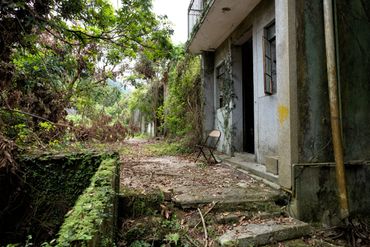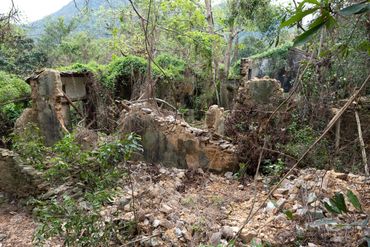North East Hong Kong Villages
Kuk Po
11 February 2017
In the far north east of Hong Kong, across Starling Inlet from China, lies Kuk Po, a now largely abandoned village. Rural decline is a result of its relative remoteness - the track from Luk Keng is impractical, it is more usual for people to take a boat across and to reach Kuk Po, residents need to pass through the Shek Chung O border crossing with a permit because Sha Tau Kok lies within a restricted border region.
There are some people living here and while some houses are well and truly demolished others look like they are mothballed rather than abandoned. Who knows, maybe one day the descendants of the Hakka people who have lived here for hundreds of years will come back and bring life back to this remote location. A fascinating walk around.
Yung Shue Au
1 October 2018
Hakka village near Starling Inlet and close to the border with China. Yung Shue Au means banyan pass.












So Lo Pun
1 October 2018
One of the Plover Cove ghost villages, So Lo Pun has been uninhabited since the 1980s and is becoming ever more derelict. It is said to be haunted.











Lai Chi Wo
3 February 2019
The Lai Chi Wo village was occupied by the Tsangs, the Fans, the Wongs and the Yips who moved to other areas or overseas. The village was completely vacated but is nowadays seeing a recovery with renovation and repopulation as well as a steady flow of local eco-tourism.














Wang Shan Kuek
23 February 2020
Wang Shan Kuek, abandoned village along the Wang Tsat Ancient Trail between Plover Cove and Starling Inlet.






Tung Ping Chau
13 May 2017
Once a thriving community of 2,000 people, now the homes on this remote Hong Kong island are being reclaimed by nature. Everybody left by the 1970s but nowadays there's a healthy eco tourism weekend crowd, well catered for by the villagers. There's an old Gurkha camp and Tung Ping Chau has many geological features you won't find anywhere else in Hong Kong - freaky rock strata, wave cut beaches and sea stacks.
Sha Lo Tung Abandoned Village
3 February 2018
The Hakka villagers in Sha Lo Tung were farmers growing rice and vegetables and rearing chickens, ducks and pigs. They sold their produce in Tai Wo Market. The population of the village in 1960 was 260. With a drop in agricultural activities villagers moved overseas and worked in city areas, the village became gradually deserted and in the mid-1970s only a few dozen elderly people still lived in the village. It is now abandoned.



























































